Slanted FlyingJournal of Tai Chi Chuan
Training
School Traditions/Principles (Daotong 道統)
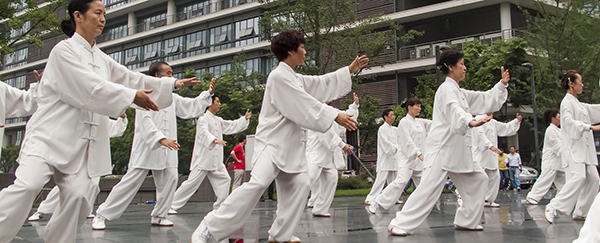
Just as every individual has their personality and idiosyncrasies, schools of Taijiquan (太極拳) also have specific traditions and rules (daotong, 道統, orthodoxy). This is evident in the differences between recognized styles (陳 Chen, 楊 Yang, 吳 Wu, 武/郝 Wu/Hao, 孫 Sun, etc), as well as variations within styles, e.g., the numerous Yang style variants.
Many teachers teach in a similar manner to how they were taught, therefore continuing the traditions that were passed on to them. Teachers are often more comfortable teaching what they were taught and works for them, rather than adapting their instruction to the specific strengths, weaknesses, and interests of each student.
Within traditions, teachers have different interests and backgrounds than their forefathers. Some emphasize martial skills; others focus on health, meditation or mindfulness, balance, fitness, energy, etc. Some teachers have extensive knowledge from their professional work (e.g., physical therapy, law enforcement, etc.), hobbies or other experiences that they incorporate into their instruction, leading to non-traditional teaching.
While many Taijiquan practitioners only train with one teacher, modern society allows for exposure to other traditions, whether through regular classes with multiple local teachers, workshops with visiting teachers, at tournaments, through videos or forums on the internet, or after finding new schools when moving to a new town.
Difficulty comes in reconciling differences between various traditions that one is exposed to. How does one know what the correct way is? Is there a correct way? Understanding why one’s school emphasizes certain principles, especially those that are not common in other traditions, is important for students trying to understand their art.
As the joke goes, “How many Taijiquan masters does it take to change a light bulb? Ten: one to change it and nine others to say that in each of their traditions they do it a little differently.”
Searching the internet reveals numerous ways that various practitioners define the thirteen techniques/energies (十三式 shi san shi) that some teachers use as a definition (or essence) of Taijiquan (手扼八卦, 脚踏五行 shou e baqua, jiao ta wuxing, the hands hold/express the eight trigrams and the feet walk the five elements/phases). If these energies define Taijiquan, then how can there be so many, often seemingly incompatible, ways that practitioners understand them? The answer is probably that different traditions understand or emphasize things differently based on unique backgrounds.
Taijiquan is a spectrum of approaches to using the principles of yin (阴) and yang (阳). Various styles follow basic principles that characterize Taijiquan, but express them in different ways.
A beginner’s goal should be to understand the art as closely as possible to the way that their teacher practices; their teacher is the ideal. Once the art is better understood, then students can understand their personal strengths and weaknesses, as well as their interests, which will determine the emphases and development for their personal art.
The Song of Practicing the Thirteen Dynamics (十三勢行工歌訣), as translated by Paul Brennan, states:
“Beginning the training requires personal instruction, but mastering the art depends on your own unceasing effort.”
This could be interpreted as simply meaning that mastery requires personal practice, but I think that there is more to this saying. I think mastery involves incorporating the art’s principles spontaneously. This means that fixed forms and techniques, which provide the foundation for learning the principles, are transcended. We want to embody the principles underlying the forms and apply them outside of fixed form applications.
There’s a saying that one technique creates a thousand techniques. This implies that there are numerous correct ways to use a technique, even though most practitioners are only shown a few when being taught.
Rather than seeing one fixed technique, we want to see the many potentials of that technique, and we want to be able to change depending on the specifics of the interaction with an opponent. We want to be able to understand the forces (the shi san shi) involved, and be able to utilize them as desired in an unfixed manner.
Since you are different from your teacher, your practice and expression of the art will become unique to you. The teacher points the way, but the student must travel the path, and there can be many paths to get to the metaphorical peak of the mountain.
The desire is to have every generation be better than the previous. The art should progress, not just stay at, or below, the teacher’s level. Therefore, if a dedicated student is capable, their understanding and skill should progress beyond their teacher’s, and beyond what the teacher can teach (i.e., it must come through the student’s effort).
This requires an extensive understanding of the principles, and how they relate specifically to one’s own body. Correctly doing something for one practitioner may be incorrect for another, and correctly doing something in one circumstance could be wrong for another situation. Also, practitioners should know when it is correct to break training rules.
Some training rules are designed to cultivate energy, relaxation, stress relief, calmness, clarity, etc., but it is often incorrect to follow these rules when applying the art in combat. For example, one can use training that stretches one’s limits during practice, but it would be incorrect to purposely be at your limit, without a reserve, when in combat. While a practice may expand your range, don’t allow an opponent to catch you at the limit of your range.



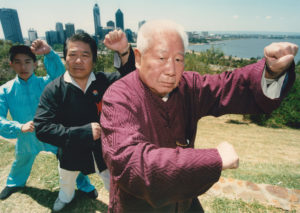
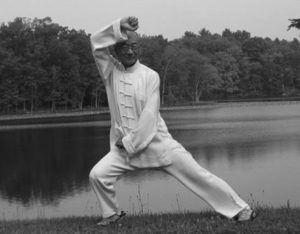
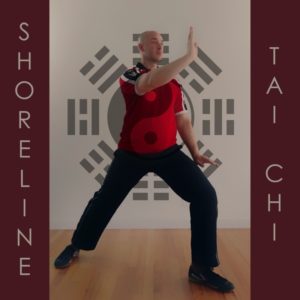
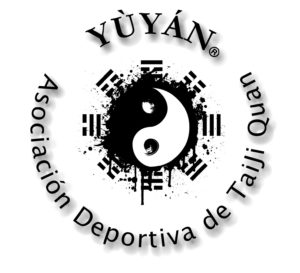







Slanted Flying was apparently unable to get permission to reproduce the photo of the volleyball player that was analyzed in this article. For those who are interested, the picture titled “Volleyball Serve Receive Low Position” can be seen at the following site (VollyballAdvisors.com):
http://www.volleyballadvisors.com/volleyball-passing-techniques.html